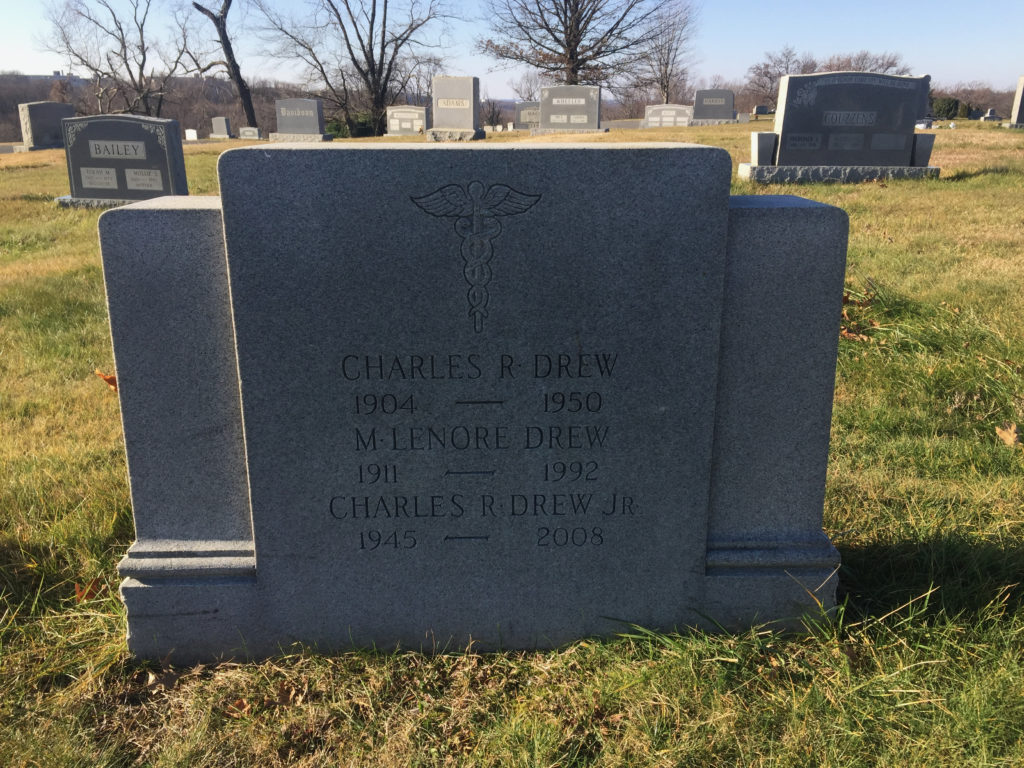Erik Visits an American Grave, Part 787
This is the grave of Charles Drew.

Born in 1904 in Washington, D.C., Drew grew up in a middle class Black family in the city. After high school, he went to Amherst College in Massachusetts, one of the nation’s integrated colleges. Upon graduation in 1926, he became a chemistry professor at Morgan College in Maryland, today Morgan State University, a historically Black college. He taught there for two years to raise money so he could attend medical school, which he started at McGill University in Montreal in the fall of 1928. He did very well, graduating second in his class. In 1935, he became a professor at Howard Medical School and then in 1938 did more graduate work at Columbia University. He got particularly interested in blood preservation technology. He finished his PhD in 1940 by working on that issue. He was the first Black doctor to do so. But would the American Medical Association allow him to join? Of course not. It was a white only organization.
Despite the segregation and racism that dominated American medicine, Drew was probably the leading national expert on blood preservation technologies by 1940. As the nation was moving toward World War II, this got him the attention of the federal government. He became director of the Blood for Britain project that year. He basically invented the idea of bloodmobiles, created central facilities where people could give blood, figured out how to run rapid tests on it, and did a great job of getting plasma donations too, figuring out to scale up its production for donations. The real brilliant part of all of this was figuring how to preserve it for shipping, which included adding anti-bacterial substances It was a key effort that not only helped the British in the early years of the war but also laid the groundwork for the American effort for its own soldiers in the war.
In 1941, Drew was named the first director of the Red Cross Blood Bank. This however was a problem. The Red Cross at this time provided blood for the military. But military policy is that blood was segregated. And so Black Americans could not donate blood at all. Drew himself included. You can only imagine how horrified Drew was with all of this. In part because of this, he left the Red Cross in 1941 and returned to Howard to train the next generation of leading Black doctors.
Drew remained deeply committed to Black education and participated in an annual clinic at the Tuskegee Institute in Alabama starting in 1939. This clinic provided much needed medical care to the Black population in the area. In 1950, he was driving down there after a night of surgery. He probably fell asleep and wrecked the car in North Carolina. It killed him, though the other three doctors survived. It went around that Drew, who was one of the most famous Black people in America at this time, died because no southern hospital would provide him a blood transfusion. This was repeated on the show MASH, as well as in other parts of popular culture. Now, this nation’s screenwriters really have created some on-the-nose stories. And this story is a hell of a metaphor for the history of American white supremacy. But it’s also not true. He died because he basically tore his leg off. The other doctors were barely hurt. They said themselves that there was nothing that could be done for him. He was only 45 years old.
Charles Drew is buried in Lincoln Memorial Cemetery, Suitland, Maryland.
This grave visit was sponsored by LGM readers, one I visited on my recent trip to the South. If you would like this series to visit other Black doctors, you can donate to cover the required expenses here. James McCune Smith is in Brooklyn and Daniel Hale Williams is in Chicago. Previous posts in this series are archived here.


